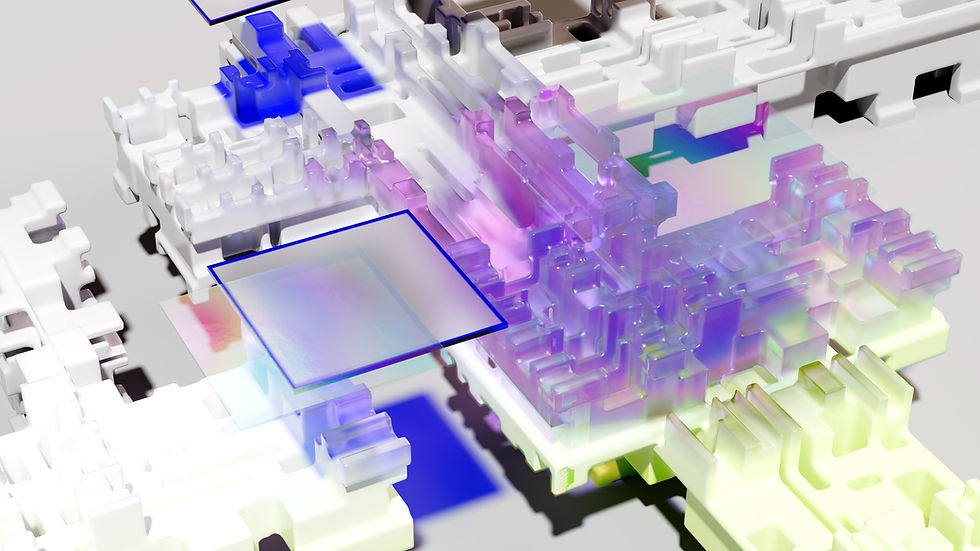AI Language Models for Semantic Concept Mapping
- Apr 25
- 3 min read
Updated: Apr 26

Authors: Ali Daowd and Marcelo Fiszman, Semedy Inc.
Healthcare organizations develop and maintain data dictionaries and discrete textual annotations to manage clinical workflows and support patient care. These clinical terms typically refer to problems, medications, laboratory results, and clinical observations. However, ambiguous abbreviations and acronyms are frequently used, along with arbitrary truncations and spelling mistakes. These factors make it difficult to encode and aggregate these textual entries across organizations, effectively limiting interoperability.
Mapping clinical terms to standardized terminologies such as LOINC, SNOMED-CT, RxNorm, and ICD is crucial for widespread interoperability. Traditional mapping approaches, which frequently rely on string-matching, struggle with misspellings, ambiguous abbreviations, and synonyms. Thus, string matching is frequently combined with hand-crafted rules to overcome these challenges. The dependency on labor-intensive methods to cope with lexical and semantic variability limits the scalability and generalization of string-matching approaches.
AI-powered Semantic Mapping
Our latest innovation leverages AI-driven Language Models (LM) to accurately map ambiguous clinical terms to reference terminologies. Built on “Bidirectional Encoder Representations from Transformers” (BERT), our new semantic matching algorithm goes beyond string matching by capturing the meaning of clinical terms. This allows for accurate and efficient concept mapping, even when faced with lexical and semantic variations. Our novel algorithm is implemented in Semedy’s Clinical Knowledge Management System (CKMS) as part of an existing matching and mapping tool designed to work with commonly used reference terminologies. Unlike traditional string matching, our novel algorithm leverages contextual and semantic meaning. This allows for more precise matches by considering how terms are used in real-world clinical contexts. By integrating AI, our tool overcomes challenges of traditional string matching approaches, making clinical data more actionable and interoperable.
Overcoming Challenges in Concept Mapping
Contextual ambiguity: AI understanding of context to map ambiguous terms like “lead” to the correct concept (“lead” as a metal or as an ECG electrode configuration)
Synonym variations: recognition of synonymous terms like“blood sugar” and “blood glucose”
Acronyms and abbreviations: recognition of common biomedical abbreviations and acronyms like “gtt” (i.e., glucose tolerance test)
How It Works
Contextual Encoding: the AI algorithm captures the meaning of a clinical term based on the surrounding text and semantic associations
Terminology Mapping: the AI algorithm matches local clinical terms to standard terminologies using precise semantic similarity measures
Adaptive Learning: periodic fine-tuning using new published versions of reference terminologies improves the algorithm’s ability to recognize emerging terms, synonyms, and abbreviations.
Why This Matters
By integrating AI-driven language models into our matching and mapping tool, we enhance:
Accuracy: context-aware processing improves the reliability of term matching
Efficiency: automating the matching process reduces the manual effort required by domain experts
Scalability: the tool can process a large number of clinical terms within a given domain, enabling rapid standardization of health data
Interoperability: the resulting high-quality mappings ensure actionable and interoperable clinical data that can be seamlessly exchanged across health information systems
The future of healthcare data standardization and interoperability lies in AI- driven solutions that bridge the gap between inconsistent data sources and standardized reference terminologies. With our novel AI-based semantic algorithm, we are moving closer to a reality where clinical data is broadly interoperable and actionable.
Interested in learning more? Please click on the button below to connect with us.




Comments